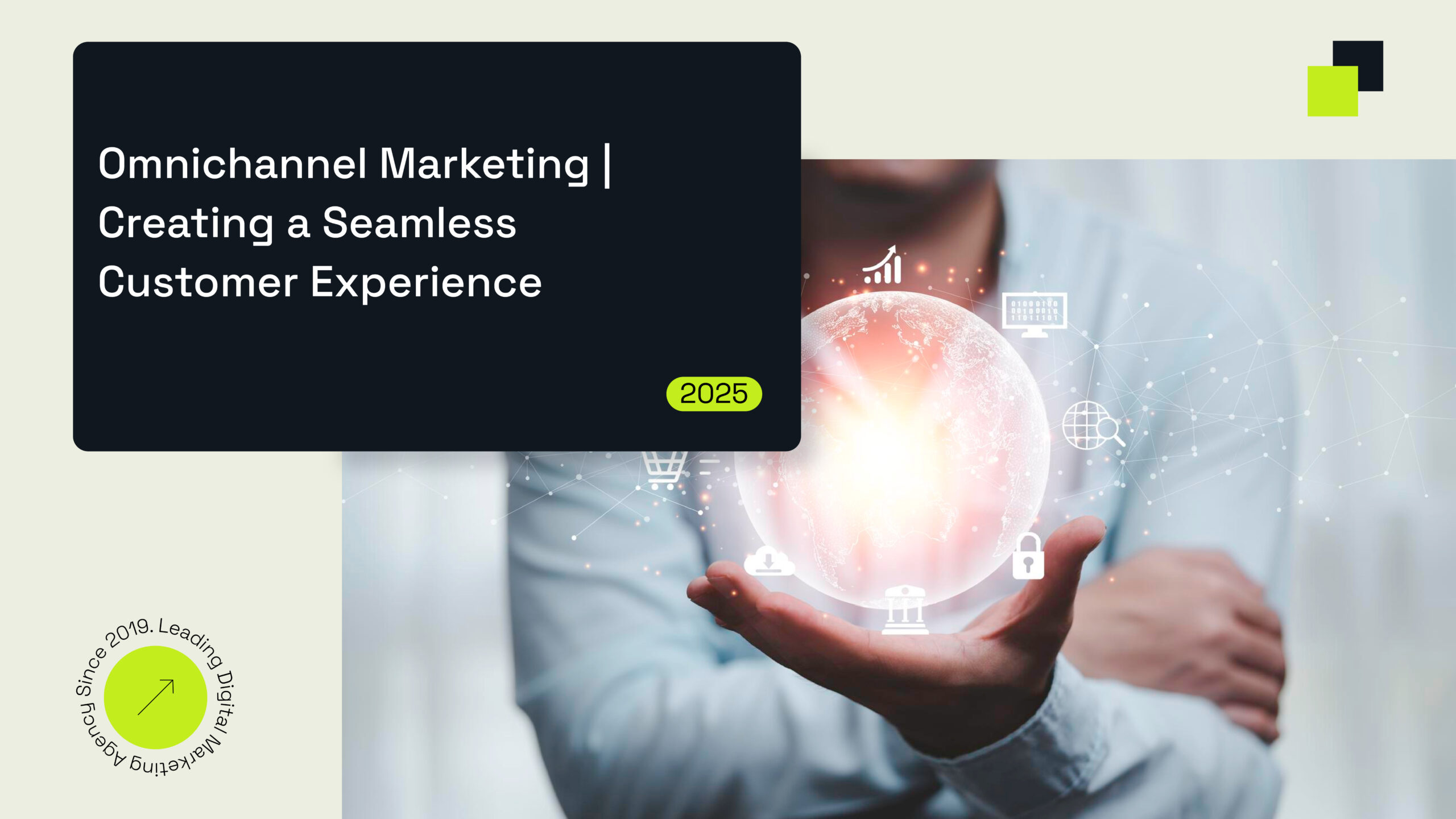
An omnichannel customer journey is very important for branding which helps in the improvement of the user experience on multiple platforms. The best multichannel customer engagement is used for consistent interactions whether it’s websites, social media, email or physical stores. By connecting cross touchpoints, businesses can strengthen relationships, enhance conversion rates, and foster a seamless customer journey.
What is Omnichannel Marketing?
Integrating online and offline channels for a uniform customer journey is an effective omnichannel marketing strategy. The customer experience optimization means that businesses deliver a consistent experience everywhere—whether on a website, social media, email, mobile apps, or even a physical store—which helps boost engagement and brand loyalty, and finally leads to conversions through personalized, cohesive interactions at all possible touchpoints.

Why Omnichannel Marketing Matters
A seamless customer journey increases engagement because it creates a cohesive brand experience at every customer touchpoint. Meaningful interactions drive customer retention and loyalty, and personalized interactions are the best way to create these connections. This holistically creates a frictionless avenue for customers to engage or buy through optimizing platforms such as social, email or in-store experiences which in turn lead to greater conversions.
Key Elements of a Successful Omnichannel Strategy
- Integrated customer data
To improve multichannel customer engagement, businesses can leverage CRM and data powered by AI analytics to follow customers’ footprint across platforms. The data-driven approach allows the brands to offer customers relevant and well-timed interactions that boost customer satisfaction.
- Personalized content
Personalizing content according to user preferences enhances multichannel customer engagement because customers are then presented with consistent relevant material by email, social media and websites. Through personalization, interactions become more meaningful and user-centric — and thus you cultivate brand loyalty.
- Seamless transitions
A unified omnichannel customer engagement strategy ensures that customers can seamlessly transition between platforms without losing any context. Carrying this idea on to your physical retail presence helps reinforce the brand message when consumers transition from your mobile app to your physical store.
Leveraging AI and Automation for Omnichannel Success
Utilizing AI-enabled chatbots for instant customer assistance is an important part of an effective omnichannel marketing strategy, making communication smooth. Automated email marketing and push notifications re-engage customers at opportune times. Marketing is further optimized with predictive analytics that create predictive models based on customer behavior and unmet needs, allowing marketers to proactively reach customers with personalized experiences and strengthen brand loyalty on different touchpoints.

Optimizing Each Channel for a Unified Experience
- Website & Mobile Apps
To optimize customer experience, businesses should build responsive design and an intuitive navigation experience on their websites and mobile apps. A smooth digital surface increases user experience, providing streamlined browsing, engagement, and conversion for customers.
- Social Media & Email
Consistent messaging means ensuring the same brand message is sent across social media and email for customer experience optimization. By presenting a unified presence over all digital touchpoints, this approach fortifies brand identity, cultivates trust, and increases engagement.
- In-Store & Customer Service
Customer experience optimization works beyond digital by training those who are in-store to work in line with your brand’s interactions online. Through this integration, consumers receive the same amount of service and information when shopping online or in physical stores.
Challenges in Omnichannel Marketing & How to Overcome Them
- Data Silos
To provide a consistent experience to the customer over various touchpoints, breaking down data silos is the first step towards a unified customer view aggregating customer data across channels. This end to end visibility enables enterprises to orchestrate personalized experiences and monitor engagement across a myriad of touchpoints!
- Channel Consistency
Inconsistent communication across different channels breeds confusion; by storing customer interactions through all channels — social media, email, the shop floor — marketers can guarantee that each customer receives a unified brand experience. Automation tools are great to help businesses maintain synchronize messaging which fosters trust and engagement throughout all marketing platforms.
- Customer Journey Mapping
Understanding your user with customer journey mapping helps you identify gaps and optimizing touchpoints for meaningful engagement. Brands can fine-tune their strategies by analyzing touchpoints along the way, streamlining an ongoing journey from discovery to conversion.

Measuring Omnichannel Marketing Success
The process of tracking engagement metrics like click-through rates and conversion rates enables businesses to evaluate the effectiveness of their marketing endeavors. The insight from customer retention and repeat purchase behavior analysis gives you a sense of brand loyalty. AI-driven insights enabling companies to optimize their strategies for perpetual enhancement and an accountable, long-term growing customer link.
Final Thoughts
Omnichannel marketing provides a smoother experience for customers, increasing satisfaction, engagement, and brand loyalty. Those who successfully integrate multiple touchpoints for their customers can harness a competitive advantage in the digital market. Ready to take your marketing strategy to the next level with expert solutions? Head to Digital Rhetoric and redefine the way you connect with customers for ultimate success!
.
.
.
What is an omnichannel marketing strategy?
An omnichannel marketing strategy integrates multiple channels (online and offline) to provide a seamless and consistent customer experience across all touchpoints.
How does omnichannel marketing improve customer experience optimization?
By ensuring smooth transitions between channels, omnichannel marketing enhances personalization, reduces friction, and delivers a more engaging and convenient customer journey.
What is the difference between omnichannel and multichannel customer engagement?
Multichannel engagement involves using multiple platforms separately, while omnichannel ensures all channels are interconnected for a unified and seamless customer journey.
How can businesses create a seamless customer journey?
Businesses can achieve a seamless journey by integrating data, using AI-driven personalization, ensuring consistent messaging, and optimizing interactions across all touchpoints.
What tools help implement an omnichannel marketing strategy?
Tools like HubSpot, Salesforce, Klaviyo, and Zendesk enable businesses to manage customer interactions, personalize marketing efforts, and track engagement across all channels.
